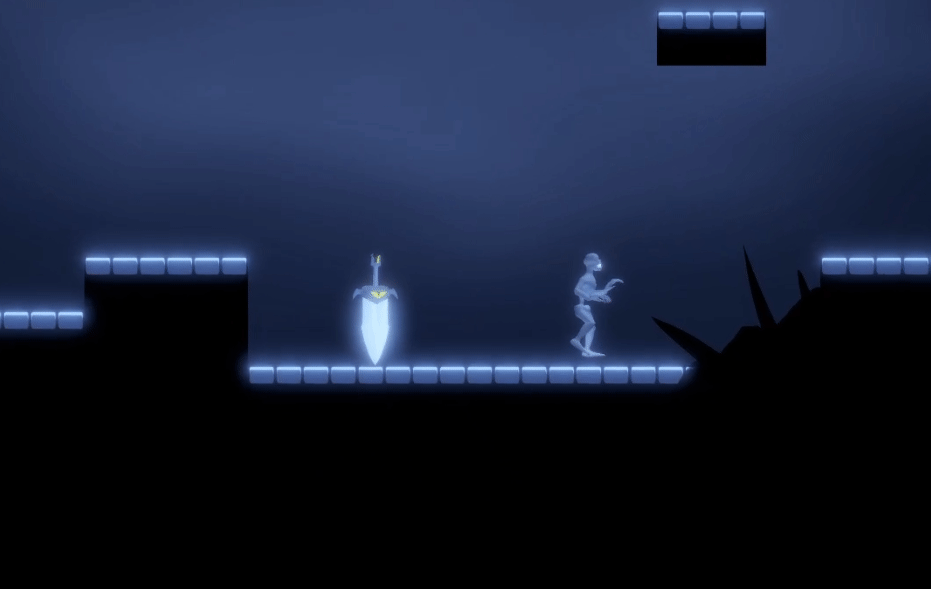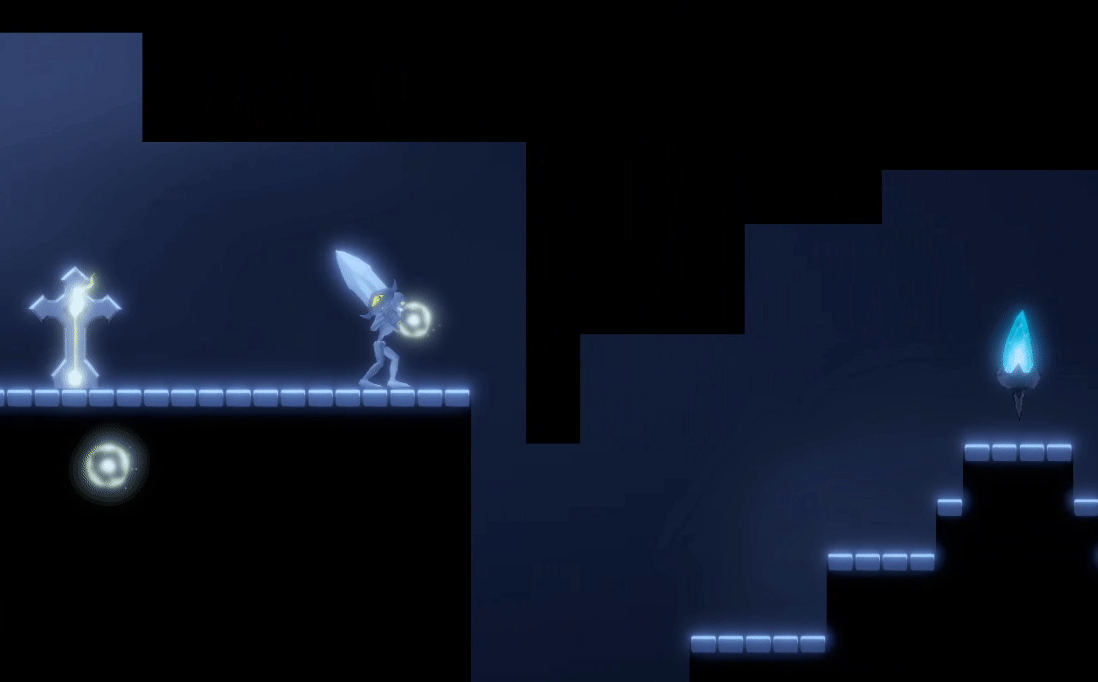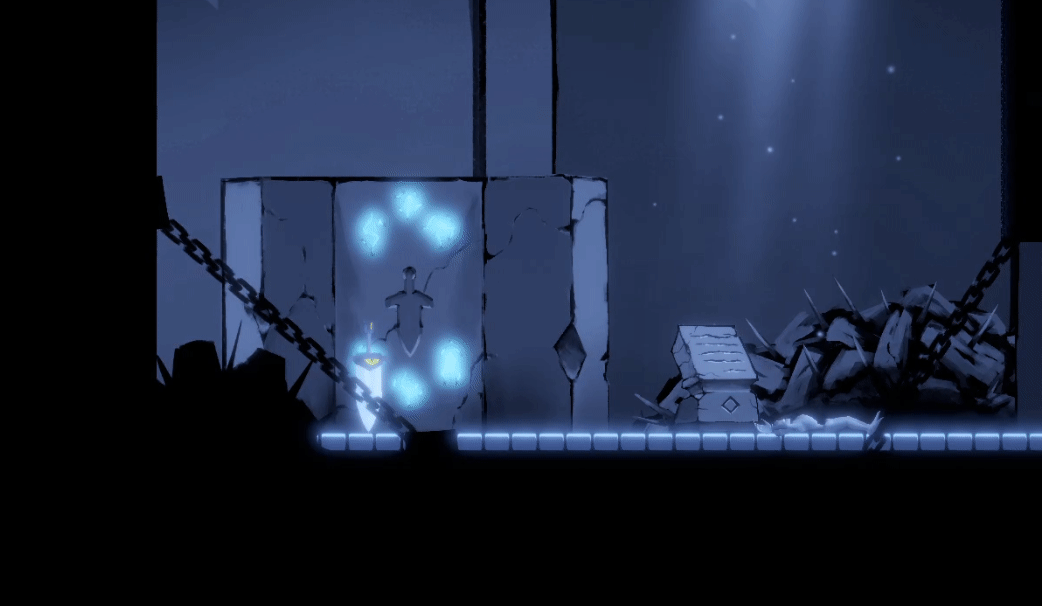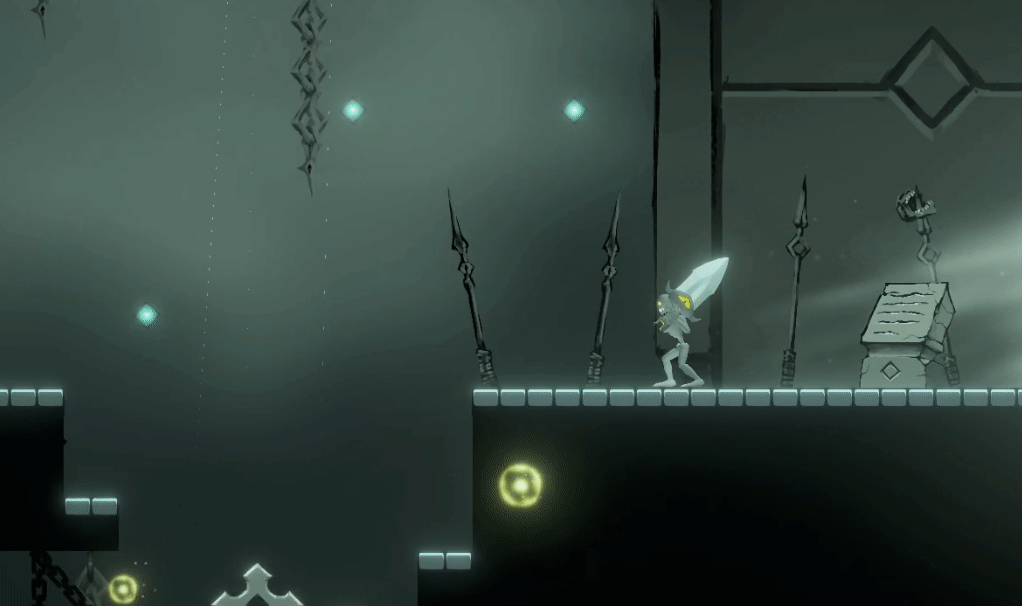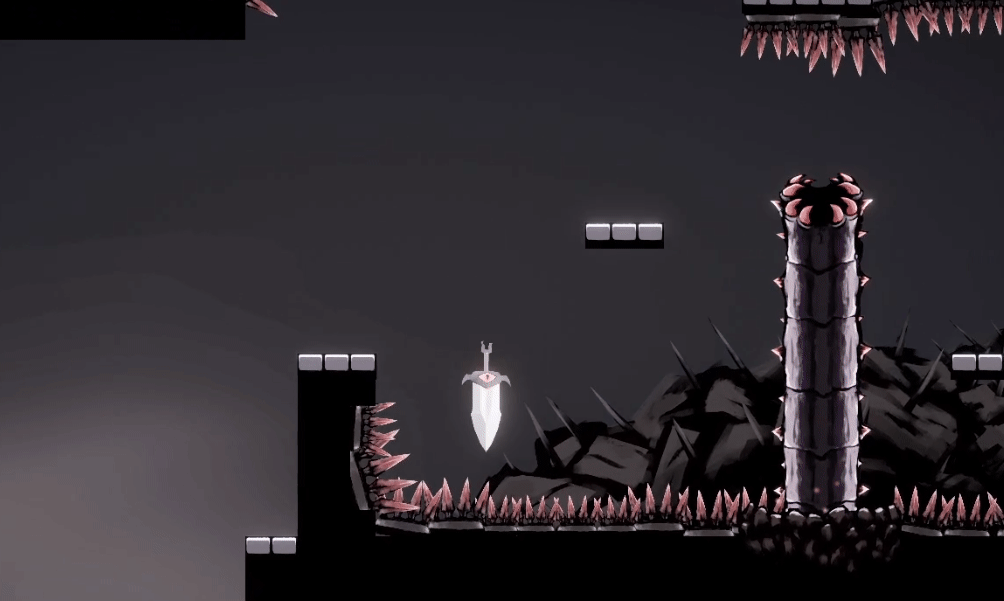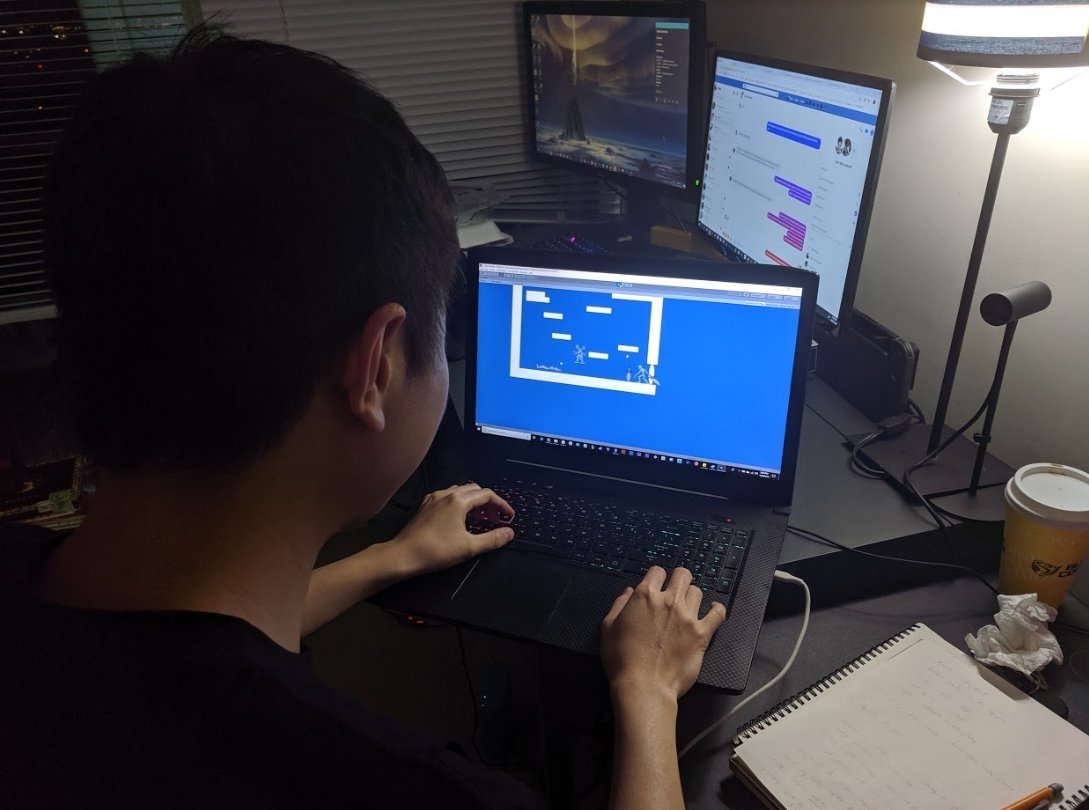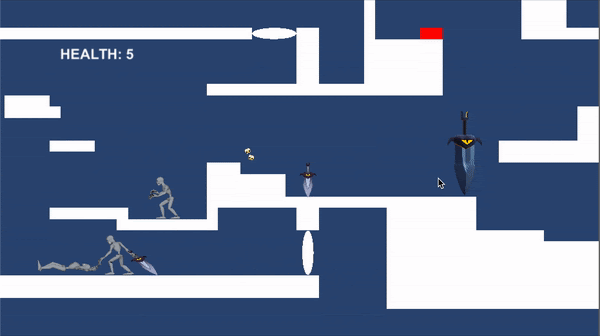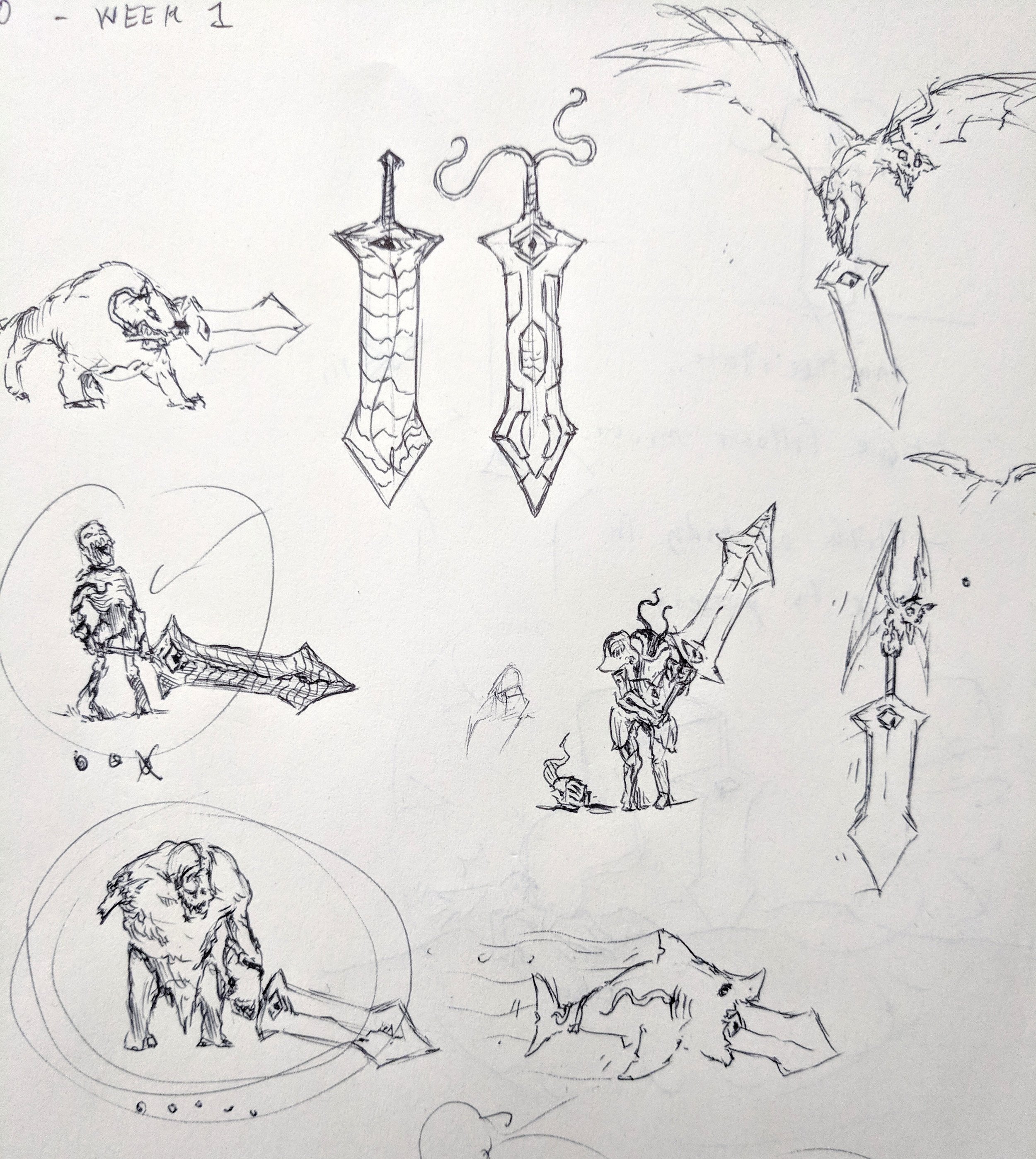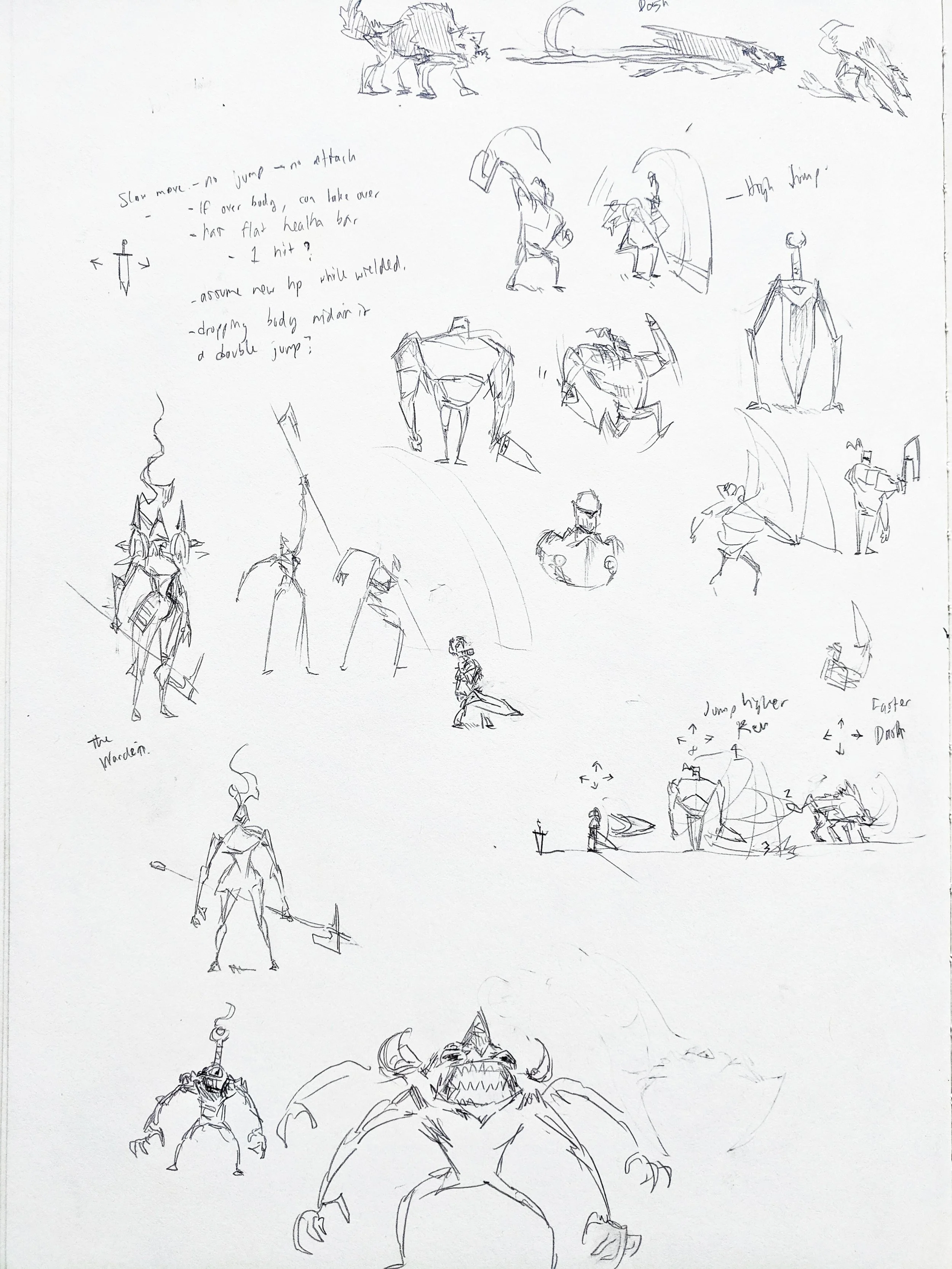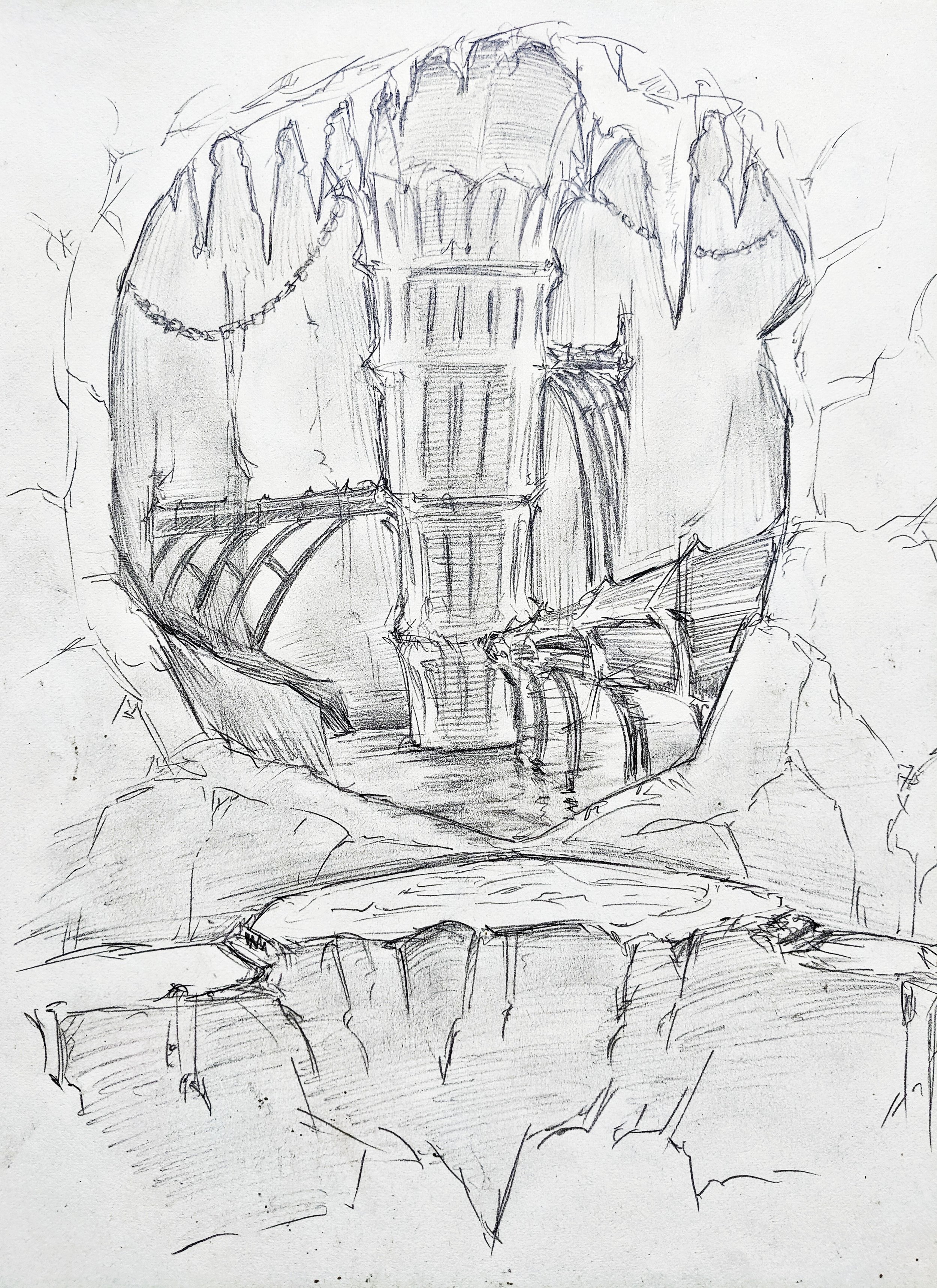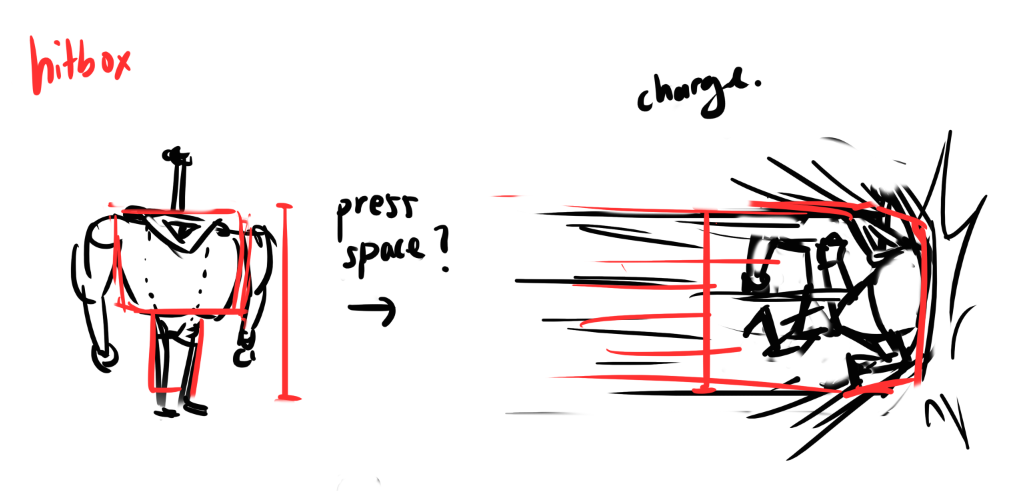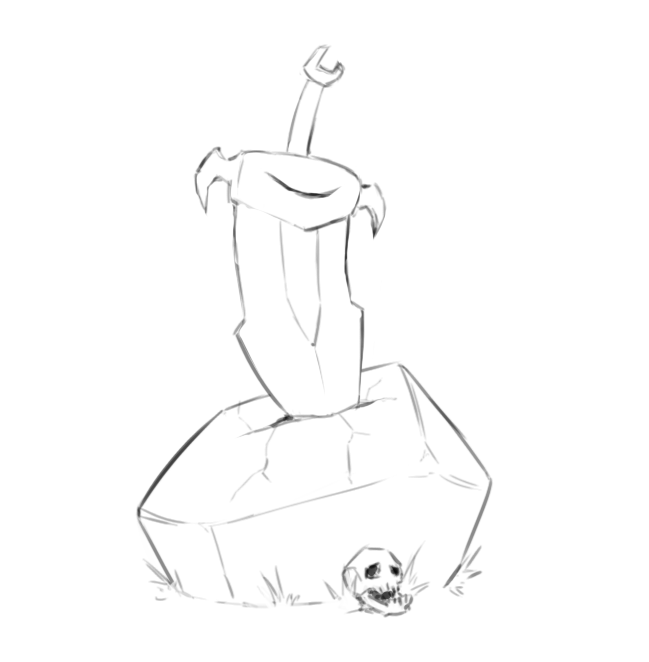
SOULMONGER
A Hollow Knight inspired, combat-based metroidvania 2D platformer where you play as a legendary evil sword that must fight their way out of an ancient prison with the unwilling help of their very captors.
MY ROLE
Game Design Lead, Level Design, Concept Art, Art + Animation
TIMELINE
12 Week, Senior Academic Project
TOOLS
Unity, Photoshop, Maya, Pen + Paper
TEAM
Zach Chan, Bert Cheung, Yi Xiang, Mark Zhang
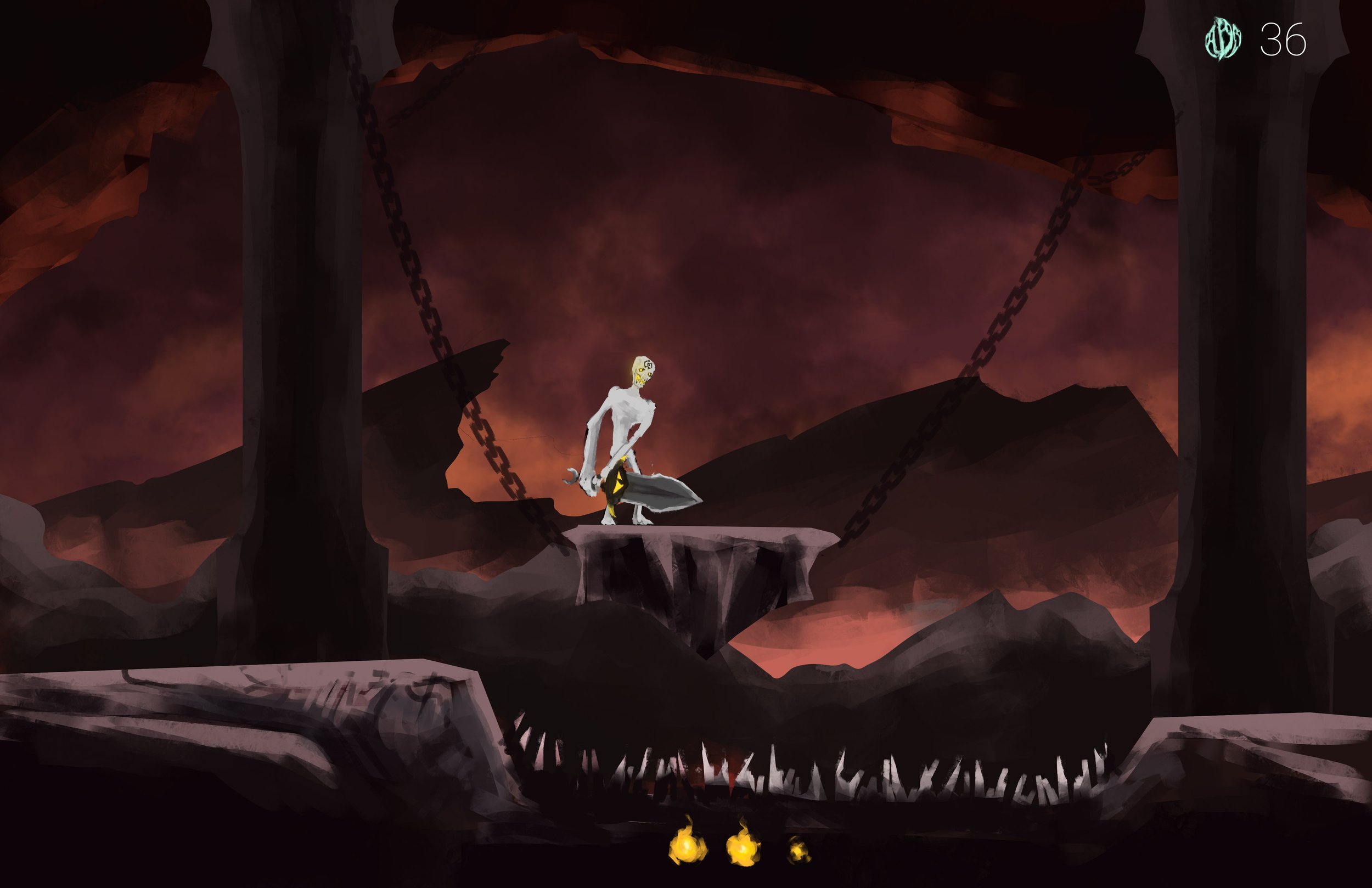
YOU ARE A WARRIOR, WIELDING A SWORD
YOU ARE A SWORD, POSSESSING A WARRIOR
ENEMIES BECOME POWERUPS
Soulmonger’s core mechanic is a twisted version of Kirby’s famous swallowing mechanic, where he eats enemies to gain their powers. You play as Styx, an evil sentient sword of legend, that is able to possess the corpses of those they slay. Styx is more vulnerable in their sword form with 1 HP and no ranged attack, but while possessing a corpse, they gain an HP buffer, as well as abilities the corpse had while living. This creates an interesting perspective shift where enemies not only appear as a challenge to overcome, but also a resource to be used. Each new enemy encountered comes with the excited curiosity of what the player could do while possessing its corpse. I designed a number of enemy archetypes, each with distinct forms that created affordance for their abilties.
Concept art for the basic enemy type.
Concept art for the flyer enemy type.
Concept art for the bruiser enemy type.
Concept art for the fast enemy type (Never created)
Jumping on enemies in sword-form provide a mario-inspired damaging attack that made sense since, well, you’re a sword with a stabby bottom.
BASIC — THRALL
The easiest enemy to overcome that provides the player with a simple, reliable moveset. The thrall can move and jump normally, has 3 HP and the ability to swing Styx as a sword, dealing additional damage.
The thrall’s attack can be angled upwards to make it easier to defeat flyers.
FLYER — GARGOYLE
The flying gargoyle enemies have less health, but are harder to reach. Possessing them provides the player with a slightly squishier 2 HP, a double jump, a ranged attack, as well as the ability to damage enemies by jumping on them, which Styx already has in their sword form.
The knight’s possessed form reflects its protective nature with Styx hiding themselves in the knight’s armor.
BRUISER — KNIGHT
As soon as we had the idea for the body-possessing mechanic, we knew we wanted to empower the player by allowing them to possess anything they slay. The knight acted as the final boss for the game, and the player can possess him to gain a hearty 5 HP, a higher jump, a powerful punch attack, and a charge ability.
DESIGNING MECHANICAL DEPTH
We added a number of secondary mechanics to the core systems of the game. When you detach from a possessed corpse, you perform a ‘corpse jump’, and are sent upwards, providing a 1-time double jump. Your sword-form is riskier with only 1 HP, but can jump on enemies or environmental hazards without taking damage, making this feature a real…double-edged sword ( ͡° ͜ʖ ͡°). These are not needed to overcome most challenges, but provide a sense of mastery for players that want to take advantage of them.
The player performs a ‘corpse jump’ to get to a collectible.
The sword-form’s invulnerable tip makes certain areas possible to traverse.
The player can perform a triple jump by pairing the ‘corpse jump’ with the gargoyle’s double jump.
LEVELS WITH IDENTITY
Hollow Knight did an excellent job giving their levels distinct identities, making them truly memorable. We wanted to replicate this with our levels by creating visual elements and gameplay challenges that were unique to each area. After I greyboxed each level to understand their gameplay challenges, I created the background art and assets to give them a memorable theme.
Concept art depicting different level areas and the pacing of enemy types.
A corpse is possessed before being taught to attack by breaking a door.
TUTORIAL LEVEL
The first level is primarily reserved for teaching the game’s core mechanics. Stone tablets are spaced throughout to offer diagetic instructions for overcoming various challenges. I made sure to smoothly onboard the player to new challenges by introducing them individually in controlled environments.
An NPC placed in front of a large gate with 3 key holes introduces the overarching goal for the game.
HUB SPACE
Metroidvanias traditionally have a non-linear world, where the player can freely choose the order in which they experience the levels. Our hub space acted as the connecting area between these levels. The player is given a clear goal near the entrance to collect 3 keys to escape. Chains are a consistent theme throughout the hub space to invoke the feeling of imprisonment and connectivity.
Avoiding a bullet-hell corridor challenge.
FIREBALL LEVEL
This bullet-hell style level contains multiple platforming and timing-based challenges. It’s filled with tight corridors requiring small, precise movements to avoid the constant barrage of fast-moving fireballs. Corpses are important to soak damage from stray hits but the player can also use their sword-form to bounce off of fireballs in mid-air by jumping on them.
Getting above a gargoyle body while avoiding surrounding spikes and worms.
WORM LEVEL
The gargoyle is featured heavily in this level to supplement its increased verticality. It’s filled with walls of spikes and dangerous looking worms that jutt out of walls. These hazards can be used as platforms while in sword-form, allowing the player to take risky shortcuts through the level.
Using 3 thralls as platforms to get to a collectible.
LAVA LEVEL
I tried to subvert player expectations with the introduction of a hazard that the sword cannot safely jump on — lava. Having the added HP of a possessed corpse provides some buffer on landing in the lava. This level is also filled with a large number of thralls, which the player is able to use as platforms themselves while in sword-form, pogo-sticking off of their heads. I tried to encourage the constant swapping of bodies to take the form of whatever makes their life easier.
PROTOTYPING / PLAYTESTING
We built an early prototype to establish movement and implement our unique body swapping mechanic. I used a grid system in unity to quickly blockout explorable levels which allowed me to tweak jump heights, movement speed, and level spacing. We began playtesting early to understand the largest pain points to give us a strong foundation to build off of.
An early playtest with my roommate 3 weeks into development.
An early prototype testing our body swapping mechanic.
A prototype testing movement + platforming mechanics.
REFLECTION
As a huge fan of metroidvanias, creating this game was a blast. Having a team with an aligned vision allowed us to really push the concept and work efficiently. We tried to follow an industry-standard production pipeline which was a great learning experience and made us feel like real game developers. Being the project lead gave me the chance to hone my level design skills and my ability to clearly articulate my ideas. If I were to start this project again, there are a few things I would change.
Do less upfront macro-level design. I spent a lot of time excitedy ideating with sprawling map designs, enemy types, and boss mechanics before we even had a working prototype. It was nice to dream, but my time would have been better spent working with what we were able to actually implement.
Design for the less experienced players. The game ended up being way too hard. During an end-of-semester game showcase, many players showed signs of frustration and weren’t able to progress through some areas at all. I got caught up in trying to fit in as much content as I could, and I didn’t notice how difficult it would be for folks that weren’t playing the game all the time.
